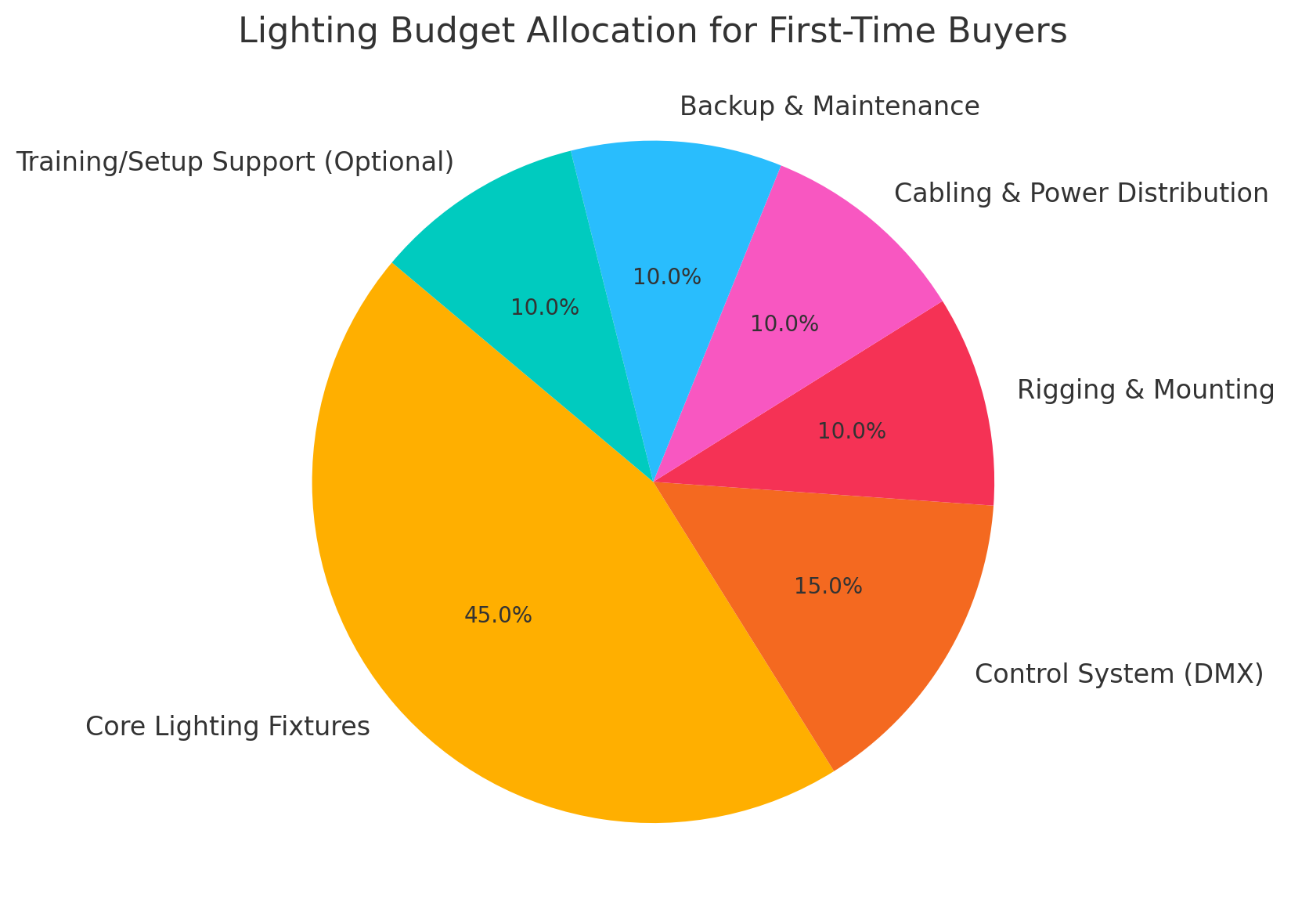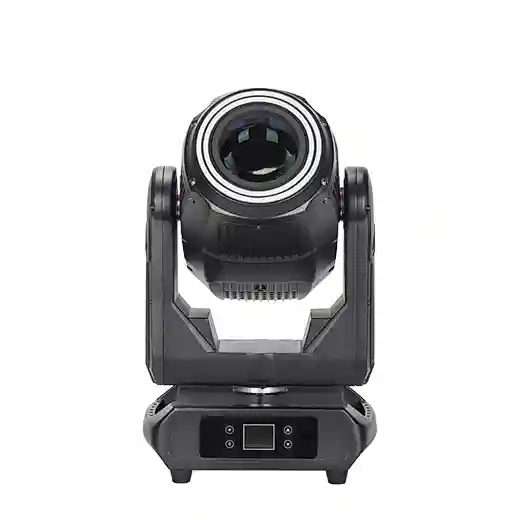Purchasing professional lighting equipment for the first time can be both exciting and overwhelming. Whether you're setting up a small stage, a home studio, a wedding venue, or a community theater, the key to success lies in smart budgeting. A well-planned budget ensures that you maximize value without sacrificing performance, safety, or future scalability.
This article outlines expert tips and essential strategies to help first-time buyers allocate their budget effectively when venturing into the world of lighting.
1. Define Your Purpose and Environment
Before discussing numbers, understand what the equipment is for. Your intended use will influence the kind of lights, control systems, accessories, and installation approach you’ll need.
Ask:
Is this for stage use, video production, architectural accenting, or event decoration?
Is the venue indoor or outdoor?
How often will the setup be moved or reinstalled?
Example: A touring DJ might prioritize compact, durable fixtures, while a theater designer may need color accuracy and programmable control.
2. Categorize Your Lighting Needs
Divide your total lighting budget into logical categories to avoid overspending on one element while neglecting others.
Typical Categories:
| Category | Suggested % Allocation |
|---|---|
| Core Lighting Fixtures | 40–50% |
| Control System (DMX) | 15–20% |
| Rigging & Mounting | 10–15% |
| Cabling & Power Dist. | 10–15% |
| Backup & Maintenance | 5–10% |
| Training/Setup Support | Optional (5–10%) |
This modular approach gives structure to your spending and ensures you don’t forget critical support gear.

3. Prioritize Fixtures with Versatility
As a first-time buyer, it’s tempting to go for flashy or specialized fixtures. However, investing in versatile, multi-functional lighting units will provide better long-term value.
Ideal starter fixtures:
3-in-1 Hybrid Moving Heads (beam, spot, wash in one)
RGBWA+UV LED PARs for washes and uplighting
LED Profile Lights with framing shutters and zoom
Battery-powered wireless uplights for flexibility
Tip: Choose models with IP65 waterproof ratings if you anticipate any outdoor use.

4. Balance Quality and Quantity
When faced with budget constraints, it may be wiser to buy fewer high-quality fixtures than many cheap ones.
Cheap gear = faster failure, poor output, no support.
Mid-range products from trusted brands = longer warranties, better optics, and resale value.
Tip: Look for fixture reviews, warranty terms, and after-sales support from sellers.
5. Don’t Undervalue Control Systems
Lighting fixtures are only as good as the system that controls them.
Options:
Hardware Controllers (e.g., DMX consoles): reliable and performance-friendly.
Software-Based Solutions: flexible and cost-effective for small budgets (e.g., QLC+, Lightkey, Onyx).
Tip: Set aside budget for control training or configuration services if you're new to DMX or Art-Net.
6. Include Infrastructure and Safety Costs
Many first-time buyers forget to budget for cables, safety hooks, clamps, flight cases, cable ramps, and power distribution units.
These aren’t optional—they are mission-critical.
Must-haves:
DMX cables with appropriate shielding
Surge-protected power strips or distro boxes
Mounting clamps and safety wires
Cable ties and cable management tools
7. Plan for Maintenance and Replacement
Allocate a small portion of your budget to maintain your system over time:
Replacement LEDs or lamps
Spare fuses, cables, connectors
Cleaning kits (air blowers, alcohol wipes)
Tip: Consider a 1-year checkup plan if your setup is fixed installation.
8. Explore Bundle Deals and Used Gear Carefully
Many suppliers offer package bundles at discounted rates, including fixtures, cables, and controllers. These can be a smart entry point if curated by a reputable brand or integrator.
Caution with Used Equipment:
Check usage hours
Inspect for heat damage and fan wear
Confirm DMX responsiveness
Only buy second-hand from known, reliable sources.
9. Leave Room for Expansion
Your needs will grow. Budget 5–10% as contingency or future investment:
Add new fixture types (e.g., strobes, pixel bars)
Upgrade controllers
Scale the number of fixtures with repeat purchases
A scalable system saves you from starting from scratch as your events grow in complexity.
10. Consult a Lighting Specialist
When possible, consult a professional lighting technician or designer for a one-time session. They can review your space, budget, and goals to recommend a balanced setup—saving you money and stress in the long run.
Sample Budget Allocation Table (Starter Setup)
| Item | Quantity | Unit Price | Total |
|---|---|---|---|
| 3-in-1 LED Moving Heads | 4 | $450 | $1,800 |
| RGBW LED PAR Cans (Indoor/Outdoor) | 6 | $120 | $720 |
| Basic DMX Controller (Software+USB) | 1 | $200 | $200 |
| DMX Cables, Power Cables, Distro Box | – | – | $400 |
| Clamps, Stands, Safety Wires | – | – | $250 |
| Spare Lamps, Cleaning Tools | – | – | $150 |
| Total Estimate | $3,520 |
Conclusion
Purchasing your first set of lighting gear doesn’t have to break the bank—but it does require strategy. By dividing your budget across fixtures, infrastructure, control, and safety, you ensure a reliable and future-ready lighting system. Focus on scalability, invest in versatility, and don’t overlook the “invisible” gear that keeps everything running safely.
READ MORE:





Blue Sea Lighting is an enterprise with rich experience in the integration of industry and trade in stage lighting and stage special effects related equipment. Its products include moving head lights, par lights, wall washer lights, logo gobo projector lights, power distributor, stage effects such as electronic fireworks machines, snow machines, smoke bubble machines, and related accessories such as light clamps.
Quick Links
For more questions subscribe to our email








